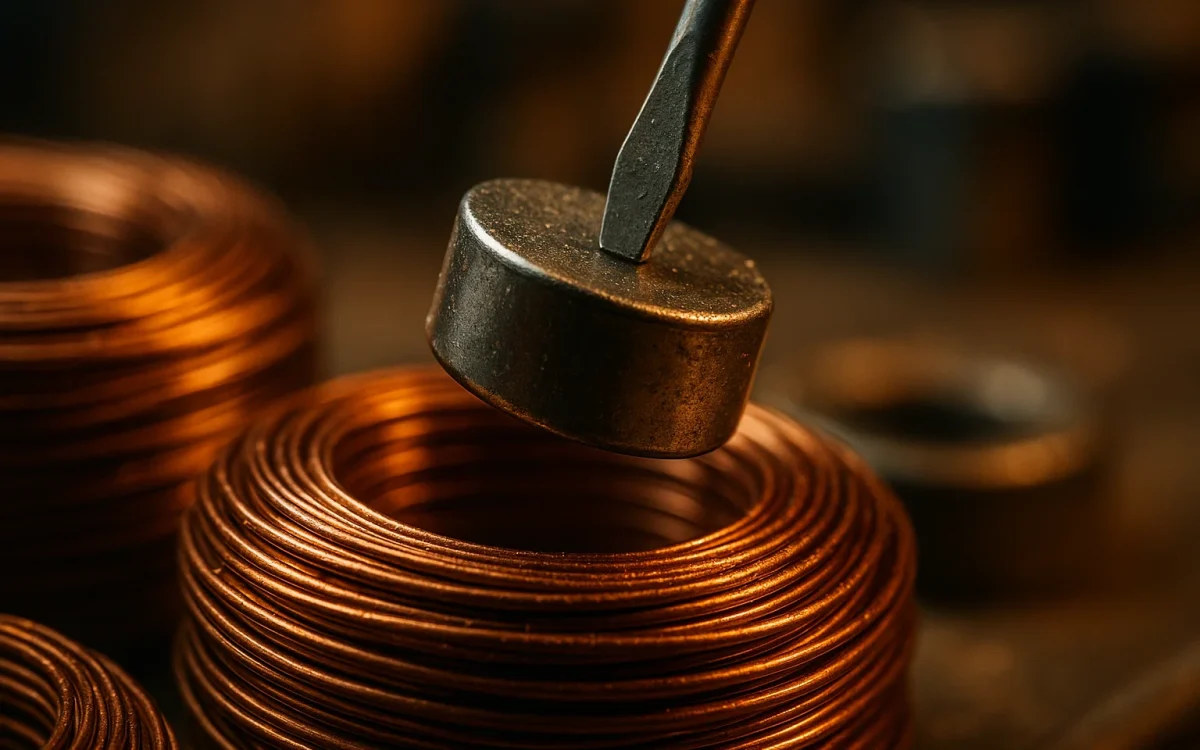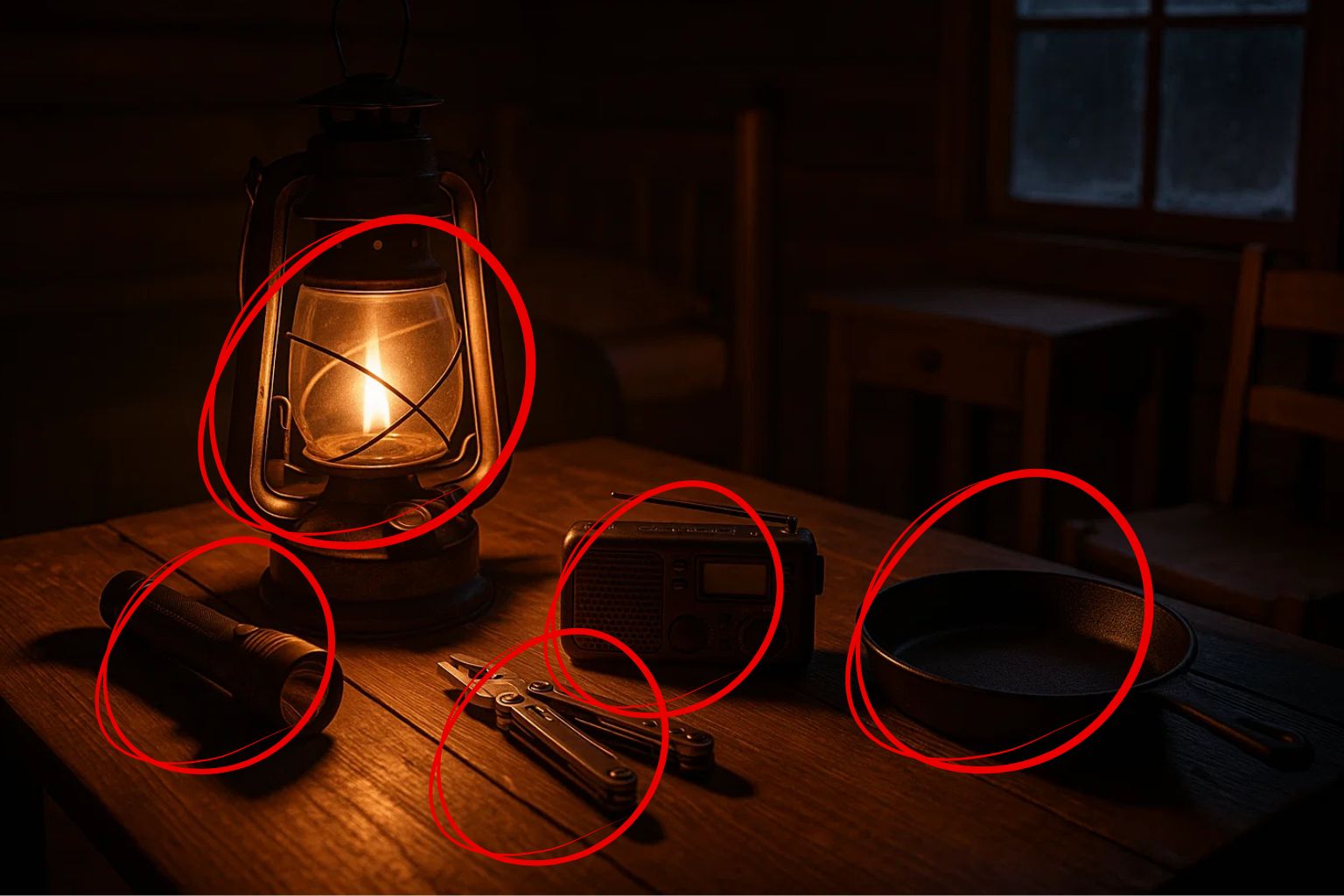Most people throw away broken electronics without a second thought. But inside almost every gadget, from old drills to DVD players, there are parts that can be reused for real-world survival tasks.
Magnets, copper wire, motors, switches, and small batteries can all serve a purpose when the grid goes down. These components can power small devices, help you build simple alarms, repair tools, or even generate electricity. Knowing how to identify and reuse them is a skill every prepper should have.
What most call “e-waste” can actually become a valuable supply of off-grid materials. Let’s crack open the junk drawer and see what’s really inside.
Your Old Electronics Are Secret Survival Kits
Most folks see a pile of broken electronics as trash. A prepper sees spare parts, backup power, and raw materials. That’s the difference between depending on the system and being ready when it fails.
If you’ve ever made something work in a blackout using what you already had on hand, you know the feeling. Maybe it was wiring a light straight to a battery or fixing a busted radio with parts from another one. It’s not about luck, it’s about recognizing potential where others see waste.
Once you start looking at old gadgets through that lens, you’ll realize you’re surrounded by ready-made survival gear. It all starts by knowing where to look.
The Survival Parts Hiding in Everyday Devices
Magnets From Speakers and Hard Drives
When you take apart an old speaker or computer hard drive, you’ll usually find strong neodymium magnets inside. These aren’t the weak fridge types, they’re powerful enough to hold tools on a metal wall, keep doors shut tight, or trigger traps and alarms.
A few of these magnets on your workbench can make organizing gear easier. You can hang blades, drill bits, or small wrenches within reach without needing a fancy rack. They also work well as quick retrieval tools, drop a nail or screw in the grass, and a magnet on a string will find it fast.
Some preppers even use them for makeshift stud finders or to secure lids and panels on DIY builds. They’re small, silent, and require no power, which makes them perfect for grid-down improvisation.
Neodymium magnets are extremely strong. Keep them away from sensitive electronics, magnetic storage drives, and especially pacemakers.
Copper Wires and Coils From Motors
If you open up almost any electric motor, fan, or power supply, you’ll find copper wire wound tightly around the inside. That copper is valuable, not just for scrap, but for real survival use.
You can unwind it carefully using pliers or snip it into short lengths for quick repairs. Thin copper wire works well for antennas, trip lines, or simple electrical connections in low-voltage builds. Thicker wire can be used for makeshift heating elements or grounding connections when working with batteries and small generators.
Even in a barter situation, copper holds value. A small bundle of clean wire can trade well with anyone doing off-grid work or small repairs.
Never burn the insulation off outdoors. The fumes are toxic and dangerous to breathe. Strip the wire by hand or with a knife instead, it takes longer, but it’s safer for you and the environment.
Motors and Small Fans Become Generators
Most small electric motors can run in reverse, spin them by hand or with another motor, and they’ll start producing current. That’s basic DC generator logic, and it’s one of the easiest ways to create power from salvaged parts.
Take a small motor from an old toy, fan, or printer. Connect its leads to an LED, then spin the motor shaft with a drill or even by hand. You’ll see the light flash instantly, proof that motion equals electricity. Scale that up, and you can trickle-charge small batteries or power a low-draw light during an outage.
Stepper motors from printers and scanners work even better. They generate more voltage at lower speeds, which makes them perfect for hand-crank or wind-driven setups.
Learning how to recognize and repurpose these small motors is the first step toward building your own off-grid power sources, something we’ll explore in the DIY builds section coming up.
Switches, Buttons, and Buzzers
Old electronics are full of small switches, push buttons, and buzzers, simple parts that can be reused for alarms or signaling systems. These components are easy to test and even easier to wire into basic circuits.
A simple example: connect a salvaged switch, a small battery, and a buzzer. Mount the switch on a doorframe or tie it to a trip wire. When the wire moves, the circuit closes, and the buzzer sounds off, instant perimeter alert. It’s not high-tech, but it works every time and costs you nothing.
You can also use these switches for manual triggers, hidden panic buttons, or backup controls in any DIY project that needs a quick on/off function.
They’re small, reliable, and can keep working long after modern security systems go dark.
Lenses and Optics for Fire or Signal
You’d be surprised what a little glass can do. Pull convex lenses from old cameras, disposable film cameras, some CD/DVD pickup assemblies, and larger flashlight optics, they focus sunlight into a tight spot and can start tinder when used properly. A small magnifier from a camera module or part of a lens assembly is perfect for concentrating sunlight onto dry char cloth or fine tinder.
Lenses also make excellent signaling tools. A shiny CD or polished reflector will throw sunlight a long way as a distress signal; a convex lens can be used for precise Morse-style flashes. Camera viewfinder lenses and fresnel elements from broken projectors can be adapted into simple signaling mirrors or hand-held magnifiers for scouting small distances.
Batteries and Power Packs
Many broken gadgets still hold usable power inside. Cordless drills, old laptops, cameras, and even children’s toys often contain rechargeable cells, usually 18650 lithium-ion or NiMH batteries. These can be salvaged, tested, and reused for small off-grid power needs like flashlights, radios, or solar packs.
Start by checking each cell with a multimeter. Anything reading below 2.5 volts is usually done for good. Healthy cells can be grouped together in balanced sets, but always match batteries of the same type, capacity, and charge level. Mixing them can cause uneven discharge or overheating.
If you find 18650s, inspect them closely. Many are still in excellent shape even after the tool or device fails. Just remember that lithium cells can be dangerous if abused, so handle them with care and store them in non-conductive containers.
Never use or charge a battery that’s swollen, leaking, rusted, or punctured. Dispose of damaged cells properly, don’t throw them in the trash or a fire. A single bad cell can vent or ignite if mistreated.
Knowing what to salvage is one thing, turning those parts into something useful is where the real prepper skills show. With a few simple pieces of wire, magnets, and motors, you can build devices that provide light, power, and information when everything else stops working. Here are a few practical builds that prove how much potential hides in everyday junk.
DIY Off-Grid Builds From Scrap Components
Hand-Crank Light or Charger
A small DC motor from a toy, fan, or printer can act as a compact generator. Spin the motor shaft and it produces current, simple as that.
To make a basic hand-crank light, connect the motor’s leads to a small bridge rectifier (to stabilize the current) and then to an LED or rechargeable battery. A plastic gear or handle lets you spin the motor by hand; even a short burst can light an LED or give your phone a few minutes of charge.
This is “power from nothing”, just motion converted to electricity. It’s a great demonstration of self-reliance, and once you’ve done it, you’ll never look at small motors the same way again.
Crystal Radio for Silent Intel
When the grid goes down, information is survival. A simple crystal radio can be built from nothing but a coil of copper wire, a germanium diode, a high-impedance earphone, and a long wire antenna, all parts you can salvage from old radios or small appliances.
The beauty of a crystal radio is that it needs no batteries. It pulls in AM signals using the power of the radio waves themselves. It’s completely silent until you plug in an earphone, and it’s nearly impossible to detect.
In a blackout or emergency, that quiet stream of local broadcasts could give you the edge, news, weather alerts, or movement updates when other channels go dark.
Hard-Drive Magnet Retrieval Tool
Here’s a quick one. Take a neodymium magnet from an old hard drive and mount it on the end of a stick or metal rod. You’ve got yourself a simple magnetic retrieval tool.
Drop a screw, nail, or small part in grass, dirt, or even shallow water? Sweep the magnet around and it’ll find it instantly. It’s one of those small tools that earns its place in every prepper’s workspace.
Salvage Safely: What Every Prepper Should Know
Before you start cracking open old electronics, a quick reminder, safety first. Some of these parts can bite back if you’re careless, especially capacitors and batteries.
Capacitors are small cylinders or blocks that store electrical energy, even after a device is unplugged. In older equipment like TVs, power supplies, or flash units, they can hold a nasty jolt. To discharge them safely, use an insulated screwdriver with a resistor or a discharge tool and keep your other hand away from metal surfaces. Never short them directly with a wire, that’s asking for sparks or worse.
Always wear basic protective gear: insulated gloves, safety goggles, and a mask if you’re cutting or prying near dust or solder. Tiny shards and fumes from old electronics aren’t something you want in your lungs or eyes.
When dealing with batteries, especially lithium-ion, keep the terminals covered or isolated with tape and never puncture, crush, or burn them. A damaged cell can vent toxic gas or ignite with little warning. Store salvaged batteries in a dry, non-conductive container like a plastic box or cardboard sleeve.
If you’re new to disassembling electronics, check the teardown and repair safety guides at iFixit.com. They offer clear, illustrated steps on how to handle components safely.
Organize and Store Your Salvaged Treasure
Once you’ve collected a good amount of parts, organization becomes key. Keep your salvaged materials sorted and labeled, magnets in one bin, motors in another, wires, switches, and batteries each in their own spot. Knowing exactly where each piece is saves you time when you’re building or repairing something in a hurry.
You don’t need anything fancy. Fishing-tackle boxes, small hardware drawers, or even pill organizers work great for separating small components. Clear containers help you see what you have at a glance, and a bit of labeling tape goes a long way. Over time, you’ll build what’s basically your own “prepper electronics kit”, a compact workshop of useful parts ready for any grid-down fix or off-grid project.
The Barter Value of Tech Scrap
Not everything you pull from broken devices needs to be kept for projects. Some parts have real barter or resale value, especially copper wire, gold-plated pins, and neodymium magnets. These materials are always in demand, and in a long-term crisis or cash-tight situation, they can easily trade for tools, ammo, or supplies.
Older electronics are especially valuable. Circuit boards from early computers, VCRs, or telecom gear often contain thicker copper traces and more precious metals than modern ones. Hard drives and speakers hold some of the strongest magnets you’ll ever find. Treat them as modern gold mines, small, silent assets sitting right under your nose.
Even waste can fund your next project. Clean, sorted scrap can be sold, traded, or reused. Nothing goes to waste if you know what to look for, and every bit of value you recover brings you one step closer to true self-reliance.
Every broken gadget you take apart teaches you something valuable. Preppers don’t see junk, they see potential. A handful of salvaged parts can become light, power, or warning systems when the grid gives out. It’s not about fancy tools or high-end gear; it’s about understanding how things work and putting them to use again when it matters most.
The next time a blackout hits, you’ll be a step ahead. While others sit in the dark waiting for help, you’ll already have a light running, a signal ready, and the confidence that comes from knowing how to build what you need from what you have. That’s real preparedness, turning broken into brilliant.
The Video Every Prepper’s Talking About:





























